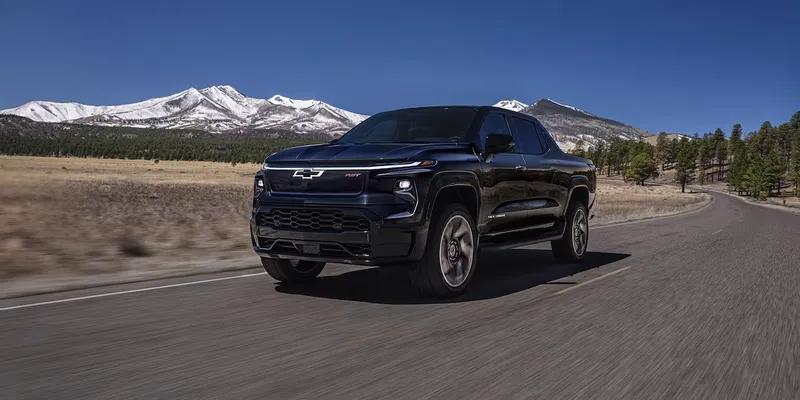The electric vehicle (EV) landscape is dramatically shifting, and 2024 is a pivotal year. With new EV tax credits rolling out, the cost of daily commuting is about to undergo a revolution. According to Bloomberg Green, the latest tax credits could save drivers up to $7,500 per year, fundamentally altering the economics of owning an electric vehicle. In this article, we will explore how these tax incentives are transforming daily commuting costs, making EVs more accessible, and encouraging a greener future for transportation.
Understanding the 2024 EV Tax Credits
What Are the New Tax Credits?
In 2024, the U.S. government introduced a revamped set of tax credits aimed at making electric vehicles more affordable for everyday consumers. These credits are part of a broader initiative to reduce carbon emissions and promote sustainable transportation. Key features include:
- Up to $7,500 credit for new EV purchases
- Income eligibility limits to ensure benefits reach middle-income families
- Incentives for used EVs with credits up to $4,000
Who Benefits Most?
The primary beneficiaries of these tax credits are middle-income families who are looking to switch from traditional gasoline vehicles to electric ones. According to Reuters Mobility, the average American spends about $2,000 annually on gasoline. By switching to an EV, these costs can be reduced by nearly 50%, thanks to lower electricity prices and improved energy efficiency.
The Impact on Daily Commuting Costs
Reduced Fuel Costs
One of the most immediate benefits of switching to an EV is the drastic reduction in fuel costs. Electric vehicles are significantly more efficient than their gasoline counterparts. According to the International Energy Agency (IEA), EVs convert over 60% of the electrical energy from the grid to power at the wheels, while conventional gasoline vehicles only convert about 20% of the energy stored in gasoline.
- Electricity vs. Gasoline: The average cost of electricity is about $0.13 per kWh, translating to approximately $500 per year for a typical EV driver. In contrast, gasoline costs can reach up to $1,500 annually, depending on fuel prices.
Lower Maintenance Expenses
EVs have fewer moving parts than traditional vehicles, which means they require less maintenance. Components like oil changes, timing belts, and mufflers are non-existent in electric vehicles. InsideEVs reports that EV owners spend about 30% less on maintenance and repairs.
- Key Savings:
- No oil changes
- Fewer brake replacements due to regenerative braking
- Longer-lasting components
Charging Infrastructure Expansion
The expansion of charging infrastructure is another factor driving down commuting costs. TechCrunch notes that 2024 will see a significant increase in public charging stations, with companies like Tesla and Volkswagen leading the charge.
- Home Charging: Installing a home charging station can cost between $500 and $1,500, but it provides the convenience of charging overnight and waking up to a full battery.
- Public Charging Networks: Rapid expansion means drivers have more options, reducing the need for costly fast-charging sessions.
Practical Tips for Maximizing Savings
How to Choose the Right EV
Selecting the right EV can maximize your savings from tax credits and operational costs. Consider the following:
- Range: Choose a vehicle with a range that meets your daily needs but doesn’t far exceed them, as larger batteries can be more expensive.
- Brand and Model: Brands like Tesla, Hyundai, and Ford offer models that are eligible for full tax credits. AutoCar suggests comparing warranty periods and customer reviews.
Where to Buy
When purchasing an EV, consider:
- Certified Pre-Owned Programs: These can offer nearly new vehicles with significant savings and still qualify for used EV tax credits.
- Dealerships vs. Online: Companies like Rivian and Lucid Motors offer direct-to-consumer sales, which can sometimes be cheaper than traditional dealerships.
Charging Strategies
Optimizing your charging habits can further reduce costs:
- Charge at Off-Peak Hours: Many utility companies offer lower rates at night.
- Utilize Public Charging Offers: Some brands provide free or discounted charging at partner networks for new buyers.
Conclusion: The Future of Commuting with EVs
The 2024 EV tax credits are not just financial incentives; they represent a shift towards a sustainable future. By reducing commuting costs and making electric vehicles more accessible to a broader audience, these credits are paving the way for a cleaner and more efficient transportation system. As more drivers make the switch, the benefits will extend beyond personal savings to include significant environmental impacts.
Are you ready to embrace the future of commuting with an electric vehicle? As the landscape evolves, staying informed and making strategic choices will ensure you not only save money but also contribute to a greener planet. What changes will you make to your commuting habits this year? Join the conversation and share your thoughts on the revolution in commuting costs. Let’s drive into a sustainable future together.

